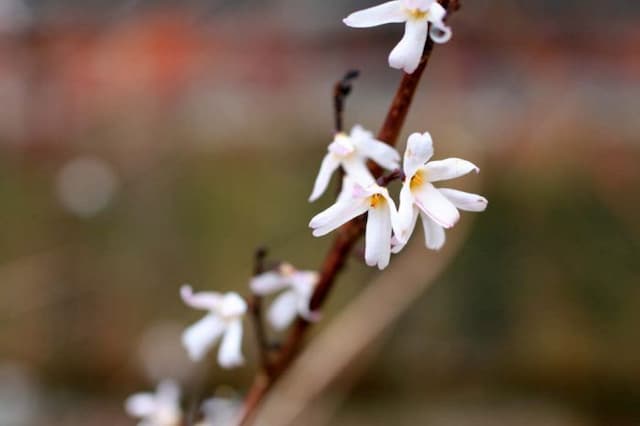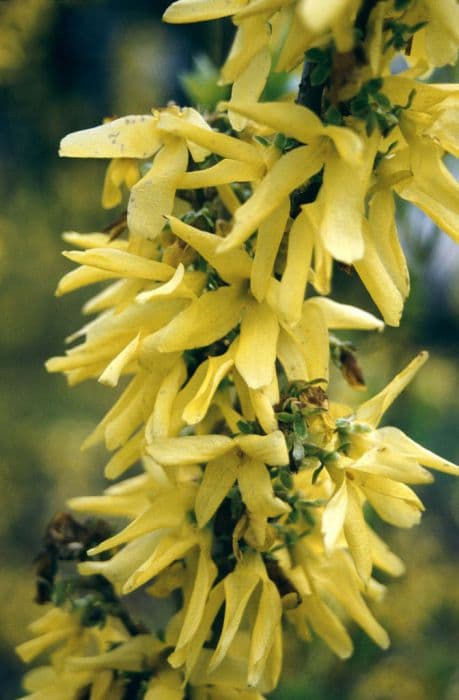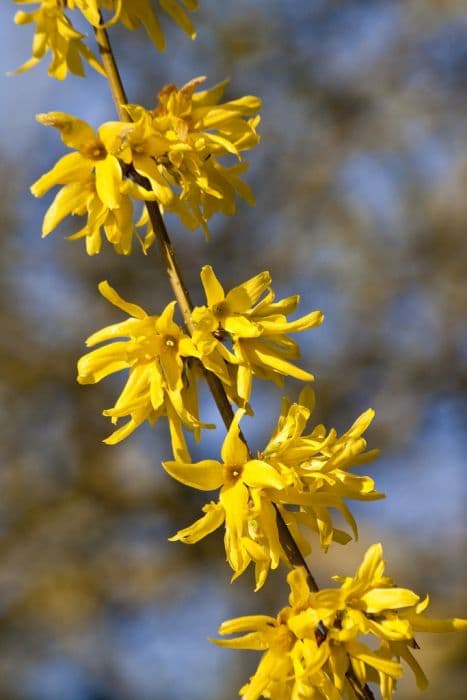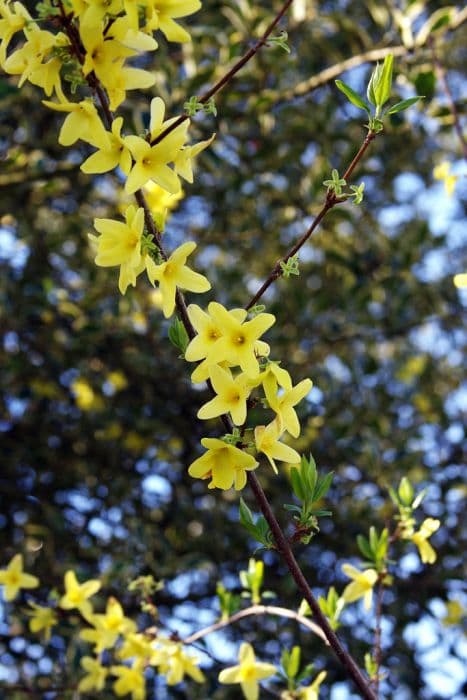Dwarf Korean Lilac Syringa 'Pink Perfume' (PBR)

ABOUT
The Syringa 'Pink Perfume' is commonly known as a type of lilac. It is celebrated for its densely packed clusters of delicate pink blooms that carry a sweet, heady fragrance reminiscent of the essential traits lilacs are cherished for. The blooms emerge in mid-spring, presenting a profusion of color that can ignite any landscape with vibrancy. Its leaves are of a lush green hue, heart-shaped with a slightly glossy sheen, providing a perfect backdrop to the soft pink flowers. As the seasons progress, these blooms may fade to a paler pink, adding a gentle pastel tone to the foliage. This plant becomes a focal point when in full bloom, with the flowers attracting not only admiring glances from passersby but also various pollinators such as butterflies and bees, which find its nectar irresistible.
About this plant
 Names
NamesFamily
Oleaceae.
Synonyms
Dwarf Korean Lilac, Pink Perfume Lilac.
Common names
Syringa 'Pink Perfume' (PBR).
 Toxicity
ToxicityTo humans
The Syringa 'Pink Perfume', commonly known as the Lilac, is not generally considered poisonous to humans. However, some people may experience allergic reactions or skin irritation from handling the plant or its flowers, and ingestion in large quantities could potentially cause gastrointestinal distress, such as nausea, vomiting, or diarrhea. It is always recommended to avoid eating plant parts that are not known to be edible.
To pets
The Lilac is not known to be toxic to pets. While it is generally considered safe, ingestion of large amounts of any plant material may lead to gastrointestinal upset in some pets, which could include symptoms such as vomiting or diarrhea. As with humans, it is best to prevent your pets from eating this or any other landscape plants to avoid potential upset.
 Characteristics
CharacteristicsLife cycle
Perennials
Foliage type
Deciduous
Color of leaves
Green
Flower color
Pink
Height
4-6 feet (1.2-1.8 meters)
Spread
4-6 feet (1.2-1.8 meters)
Plant type
Shrub
Hardiness zones
4-7
Native area
Asia
Benefits
 General Benefits
General Benefits- Attractive Blooms: Produces abundant panicles of pink flowers that are visually appealing.
- Fragrance: The flowers emit a sweet, perfume-like fragrance that can enhance the sensory experience of a garden.
- Long Blooming Period: Has a long flowering season, typically from spring to early summer, providing extended interest.
- Wildlife Attraction: Attracts pollinators such as butterflies and bees, supporting local ecosystems.
- Compact Growth: Suitable for smaller gardens with its compact growth habit.
- Drought Tolerance: Once established, it has good tolerance to dry conditions, requiring less watering.
- Low Maintenance: Requires minimal pruning and upkeep, making it ideal for gardeners of all levels.
- Cold Hardy: Resilient in colder climates, it can survive frost and harsh winter conditions.
- Decorative Uses: Can be used for cut flowers, adding natural beauty to indoor arrangements.
- Versatile Planting: Works well in borders, as a specimen plant, or in mass plantings for greater impact.
 Medical Properties
Medical PropertiesThis plant is not used for medical purposes.
 Air-purifying Qualities
Air-purifying QualitiesThis plant is not specifically known for air purifying qualities.
 Other Uses
Other Uses- The Lilac 'Pink Perfume' can be used as a natural dye source, with its flowers possibly imparting a soft green color to textiles when used in traditional dyeing methods.
- Insect-repelling properties may be attributed to Lilac 'Pink Perfume', where the flowers can be dried and included in potpourris or sachets to deter moths and other insects from wardrobes and drawers.
- Use it in culinary decoration by crystallizing the flowers to adorn cakes and pastries, adding a touch of elegance and flavor to desserts.
- Lilac flowers can be infused in water to create a gently fragranced rinse that imparts a delicate scent to linens and delicate clothing during laundering.
- These flowers can be utilized in crafts, such as being pressed for use in homemade paper or botanical prints for a lovely, fragrant touch.
- Create natural confetti with Lilac 'Pink Perfume' petals for use at environmentally-friendly celebrations or weddings.
- The boughs and branches can be fashioned into rustic wreaths or other decorative items, providing a country-inspired aesthetic and mild fragrance to the decor.
- Lilac wood is hard and durable, so it can be used for small woodworking projects such as crafting utensils or carved ornaments, when the shrub is pruned or reshaped.
- Floral essence of Lilac 'Pink Perfume' can be carefully distilled to make a natural scent for use in homemade perfumes or aroma therapy mixtures.
- The lilac flowers can be used as a subtle flavoring agent in syrups or jams, imparting a floral note to gourmet dishes when used sparingly.
Interesting Facts
 Feng Shui
Feng ShuiThe plant name is not used in Feng Shui practice.
 Zodiac Sign Compitability
Zodiac Sign CompitabilityThe Lilac is not used in astrology practice.
 Plant Symbolism
Plant Symbolism- Love - The plant's fragrant flowers are often associated with the emotions of love and affection, making it a common gift between loved ones.
- Innocence - The delicate blossoms of the lilac signify purity and youthful innocence.
- Renewal - Blooming in spring, lilacs symbolize new beginnings and the renewal of life.
- Beauty - The attractive appearance and pleasant scent of the lilac represent natural beauty.
- Nostalgia - The scent of lilac often evokes memories of past experiences and is tied to the sentimental longing for a bygone time.
- Transience - The short blooming period of the lilac reminds us of the fleeting nature of life and encourages us to savor every moment.
 Water
WaterThe common lilac, which includes Syringa 'Pink Perfume', prefers consistent moisture but requires well-draining soil to prevent root rot. Water newly planted lilacs once or twice a week, ensuring the soil is moist but not waterlogged. Mature lilacs require less frequent watering. During dry spells, water deeply every two weeks with about 1 to 2 gallons per plant, depending on size and weather conditions. Always water at the base of the plant to keep moisture off the leaves and prevent fungal diseases.
 Light
LightCommon lilacs like Syringa 'Pink Perfume' thrive in full sun, which means they need at least 6 hours of direct sunlight daily to bloom well. The ideal spot for this plant is in an area where it can receive unfiltered sunlight throughout the day. Dappled sunlight in the late afternoon can help protect the blooms in areas with very high temperatures.
 Temperature
TemperatureCommon lilacs, including Syringa 'Pink Perfume', are hardy and can tolerate a range of temperatures. They can survive winter temperatures as low as -40 degrees Fahrenheit and are comfortable in summer temperatures as high as 95 degrees Fahrenheit. The ideal growing temperature for common lilacs is between 60 and 75 degrees Fahrenheit, which encourages the best growth and flowering.
 Pruning
PruningPruning helps maintain a vigorous common lilac like Syringa 'Pink Perfume' and encourages blooming. Prune right after the flowers have faded in late spring to early summer to prevent cutting off next year's buds. Remove spent blooms, then trim back about a third of the growth, focusing on older, weaker stems to allow light and air circulation. Annual pruning will help keep the bush healthy and enhance its flowering potential.
 Cleaning
CleaningAs needed
 Soil
SoilLilacs prefer well-draining, fertile soil with good organic matter. A mix of garden soil, compost, and perlite or vermiculite is ideal. Aim for a soil pH between 6.0 and 7.0 for optimal growth.
 Repotting
RepottingLilacs do not need frequent repotting; they are typically repotted every few years as they are slow-growing. Lilacs should be repotted only when they outgrow their current container.
 Humidity & Misting
Humidity & MistingLilacs, as outdoor plants, thrive in average outdoor humidity levels. They do not require specific humidity conditions when planted in the garden.
 Suitable locations
Suitable locationsIndoor
Ensure bright light, cool temperature, and air flow for indoor lilacs.
Outdoor
Plant in sunny spot, enrich soil with compost, ensure good drainage.
Hardiness zone
4-8 USDA
 Life cycle
Life cycleThe life cycle of Syringa 'Pink Perfume', also known as Dwarf Lilac, begins with seed germination, which occurs when conditions of moisture, temperature, and light are appropriate. Following germination, seedlings develop through a juvenile phase where the focus is on vegetative growth, establishing a robust root system and foliage. As the plant matures, it enters the flowering stage, typically in late spring to early summer, where it produces fragrant pink flowers that are attractive to pollinators such as bees and butterflies. After pollination, the flowers develop into capsules, which are the fruit of the Dwarf Lilac, containing seeds for reproduction. During the autumn, the plant experiences a phase of dormancy where growth slows down, and it prepares for winter. In subsequent years, the cycle repeats with the plant growing larger and producing more flowers with each season, assuming optimal growing conditions.
 Propogation
PropogationPropogation time
Spring-Early Summer
Propogation: The Syringa 'Pink Perfume' (PBR), commonly known as the Bloomerang lilac, is typically propagated through softwood cuttings. The ideal time to take these cuttings is in late spring to early summer when the new growth is just beginning to harden but is still flexible. To propagate from softwood cuttings, select a healthy, non-flowering shoot and cut a 4 to 6-inch-long (10 to 15 cm) section. Strip off the lower leaves, leaving a few at the top, and dip the cut end into a rooting hormone powder or gel. Plant the cutting in a pot filled with a moist, well-draining potting mix and cover with a plastic bag or place in a propagator to maintain high humidity. Keep the pot in indirect light and make sure the soil remains moist but not waterlogged. Roots typically develop within 4 to 8 weeks, after which the new plant can gradually acclimate to outdoor conditions.









